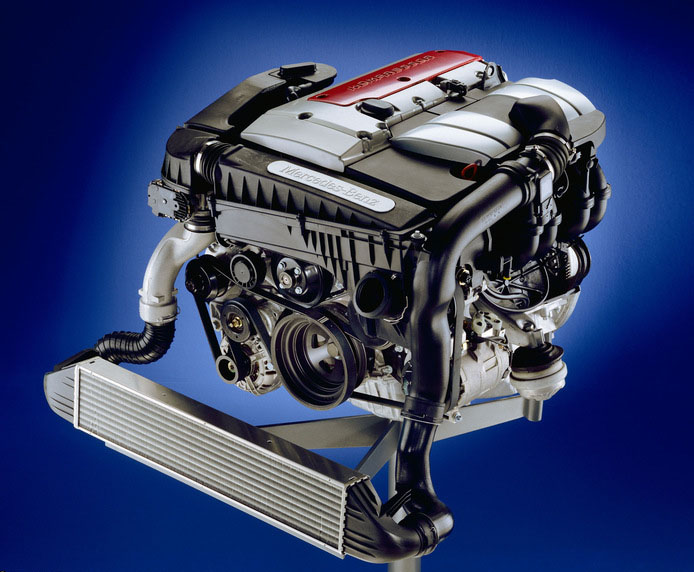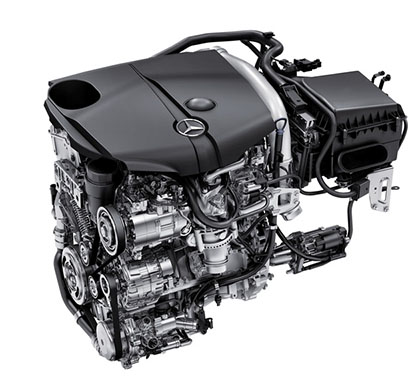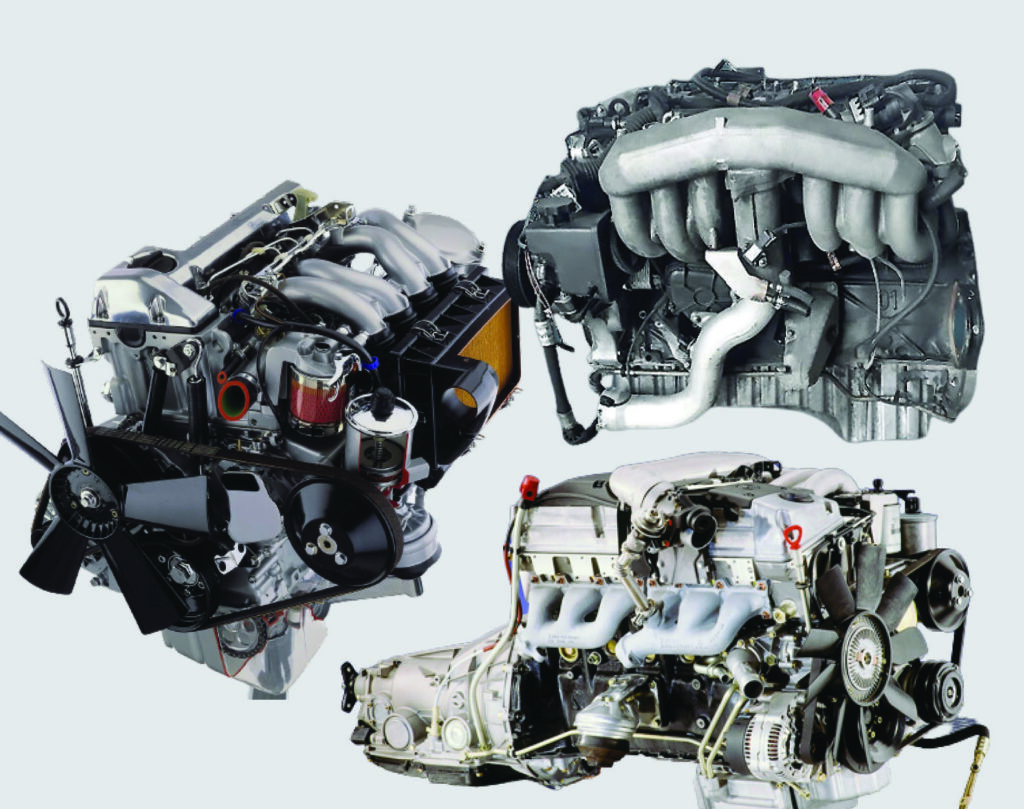Mercedes check engine light
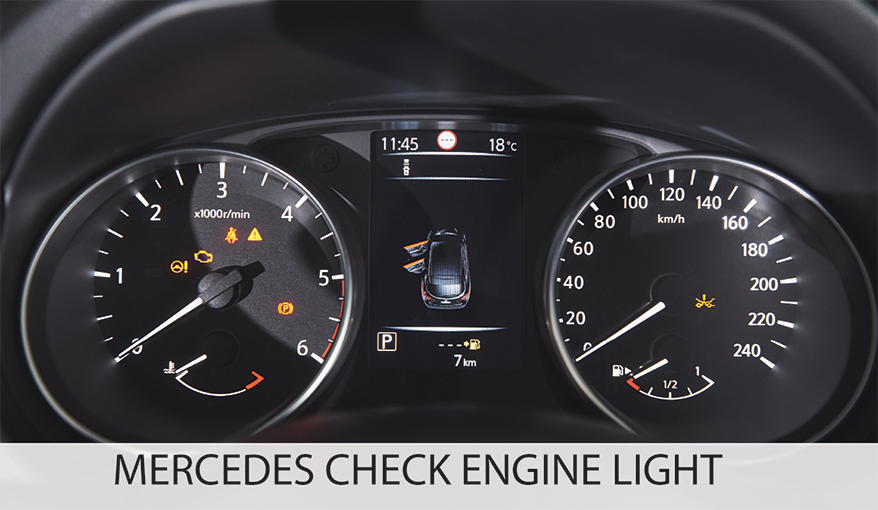
The terrifying check engine light, or is it?
Discover what the Mercedes check engine light means. Could help you avoid countless inconveniences, time, and money.
The closest appointment, if you phone the dealer, is likely 4 weeks out. How long do you hold out?
Take a moment to determine what might be wrong with your Mercedes before making an emergency stop because your check engine light has come on.
You might be able to fix the situation on your own and keep going. Or not.
Get a bird’s eye view of how to handle a Mercedes check engine light in this article.
With the Mercedes-Benz check engine light on, what next?
Common causes of the Mercedes check engine light
Your car’s check engine light is essentially an alert system. The system is calling for your attention, and, in some situations, you may be experiencing critical issues.
The Mercedes check engine light may illuminate for a variety of reasons, ranging from a simple loose gas cap to more significant engine problems.
Loose gas cap: It may sound strange, but a quick gas fill-up and failure to close the gas cap can cause the check engine light to illuminate. Because the fuel system is airtight, a loose gas cap causes the system to become pressurized, in turn triggering the check engine light.
Low fuel: Another absurd check engine light trigger. There have been reports of the low gas warning and the – check engine light – lighting up simultaneously in some models, such as the ML 350 and GLK 350. Fortunately, the check engine light sometimes goes away after a refill and turning the engine off and on again. In some cases, a reset might be necessary.
Catalytic converter: A clogged or failing catalytic converter can impair engine performance and cause the check engine light to illuminate. Before harmful pollutants are released into the atmosphere, the catalytic converter converts them into less harmful gases. If the catalytic converter fails, the check engine light will light up, indicating that the emissions control system is not functioning properly.
Failing oxygen sensor: The oxygen sensor in your Mercedes-Benz is in charge of monitoring the air/fuel mixture supplied to the engine. If the oxygen sensor fails, the engine may run lean, which means that not enough fuel is being supplied to the engine. This can lead to decreased fuel efficiency and increased emissions, both of which can cause the check engine light to illuminate.
Mass airflow sensor failure: The MAF sensor measures the amount of air entering the engine, which is then used to calculate fuel injection and ignition timing. If the MAF sensor fails to function properly, the check engine light will illuminate, plus decreased engine performance and fuel efficiency.
Engine vacuum leaks: Engine vacuum system leaks can cause the engine to run poorly and set off the check engine light.
Engine coolant temperature sensor: A faulty engine coolant temperature sensor can cause the engine to run hot or cold, causing the check engine light to illuminate.
Ignition system: A malfunctioning ignition system, such as a faulty ignition coil, can cause the engine to misfire and light up the check engine light.
Software issues – Software glitches, particularly on modern models, cause the check engine light to illuminate, and the only solution is to update the software in the affected control module.
While you may not have the knowledge or skills to diagnose the issues listed above, your instincts may lead you to the solution.
Mercedes-Benz check engine light diagnosis
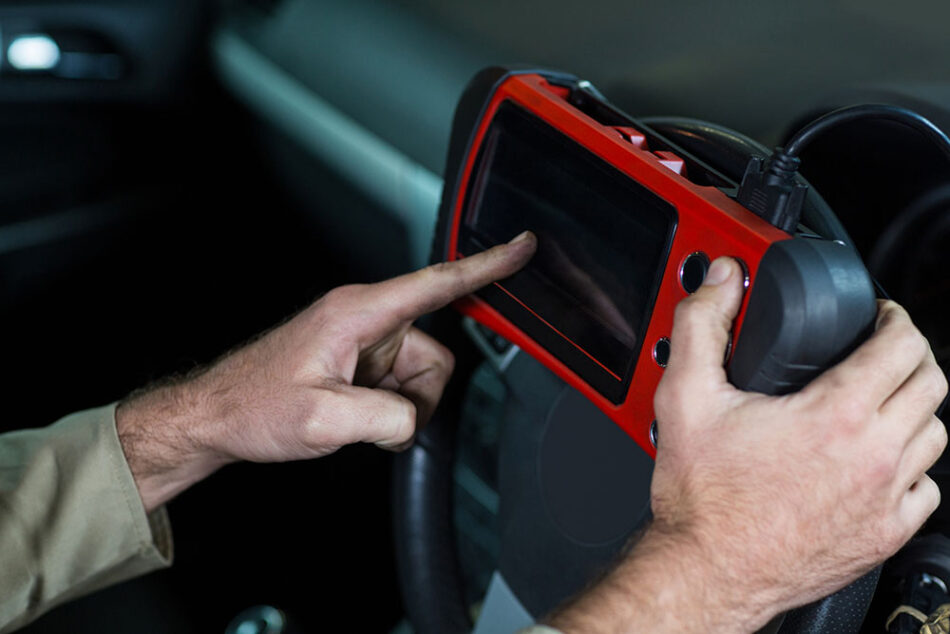
How do I know if my Mercedes check engine light is serious?
You can determine how much damage or danger you are facing by performing a fairly basic study of the symptoms and indicators listed below.
- A problem with the engine or emissions control system may be indicated by a loss in acceleration, power, or overall engine performance.
- Engine warning light flashing: The check engine blink mode is a code red signal. If the check engine light is flashing, there can be a serious engine issue—like a misfire—that has to be fixed right away. If the light is flashing, you shouldn’t keep driving.
- Rough idle – A rough idle in the engine could indicate a problem with the ignition system, fuel system, or vacuum leaks.
- If you notice an increase in smoke or exhaust emissions, it could indicate a problem with the emissions system or catalytic converter.
- Unusual engine noises, such as knocking, ticking, or misfiring, may indicate a more serious problem with the engine or its components.
- Multiple warning lights – If other warning lights, such as the battery or oil pressure light, illuminate, it may indicate a related or more serious problem with the vehicle.
- Illuminated battery or oil warning light: If the battery or oil warning light is illuminated along with the check engine light, this could indicate a more serious issue, such as a failing alternator or low oil pressure.
- If the engine is misfiring, stalling, or losing power, this could indicate a more serious problem that requires immediate attention.
- If you smell raw fuel inside the vehicle or coming from the engine compartment, it could be an indication of a fuel system problem, such as a leaking fuel line, that needs to be addressed right away.
- If your engine stalls or dies while driving, it could be a sign of a serious problem with the fuel system, ignition system, or other components.
Can I drive my Mercedes with the check engine light on?
Yes, as long as the critical signs discussed above are not present. You should extend the drive and pay close attention to any unusual noises or smells.
The check engine light is activated by emissions systems in modern Mercedes engines.
Because the vehicle does not enter limp or emergency mode, you can throttle it on the highway and likely burn off the soot deposits, which may cure the check engine light.
If the light does not go away, have the vehicle inspected by a professional as soon as possible to determine the cause and repair any problems.
how to reset the Mercedes check engine light
The dealer is not assisting you in resolving your problem because you are hundreds of miles away or they have a four-week waiting list. What are your options?
Before performing a reset, try to identify the problem. If this does not solve the problem, it is time to connect the OBD-II scanner and retrieve the diagnostic trouble codes. Once the codes have been retrieved by the scanner, go online and Google the code, followed by the forum.
For example, if the scanner displays the code P0171, simply Google…
“what does the code P0171 mean + forum”
If you are unable to determine the cause of the check engine light or the problem is beyond your expertise, it is best to contact a professional mechanic or dealership for further diagnosis and repair.
Mercedes check engine light codes
When you plug in your OBD scanner and get the results, codes should appear, and even though they appear technical, they should quickly lead to the problem.
You should save the time it takes your technician at the dealership or repair shop to diagnose the problem.
Some codes are associated with the engine, while others are associated with the transmission and the emissions system.
The codes can indicate anything from a minor problem, such as a loose gas cap, to a serious problem, such as a failing catalytic converter.
Some of the most common Mercedes error codes
P0171: System too lean (fuel mixture too lean)
P0172: System too rich (fuel mixture too rich)
P0300: Random/multiple cylinder misfire detected
P0420: Catalyst system efficiency below threshold
P0441: Evaporative emission control system incorrect purge flow
P0500: Vehicle speed sensor circuit
P2096: Post Catalyst Fuel Trim System Too Lean Bank 1
P2098: Post Catalyst Fuel Trim System Too Rich Bank 1
P2187: System too lean at idle Bank 1
P2189: System too rich at idle Bank 1
It’s crucial to remember that the codes above are only a sample of many that may cause a Mercedes check engine light to illuminate. Only a skilled expert using the right diagnostic tools can make an accurate diagnosis.
How do I clear my check engine light without a scanner?
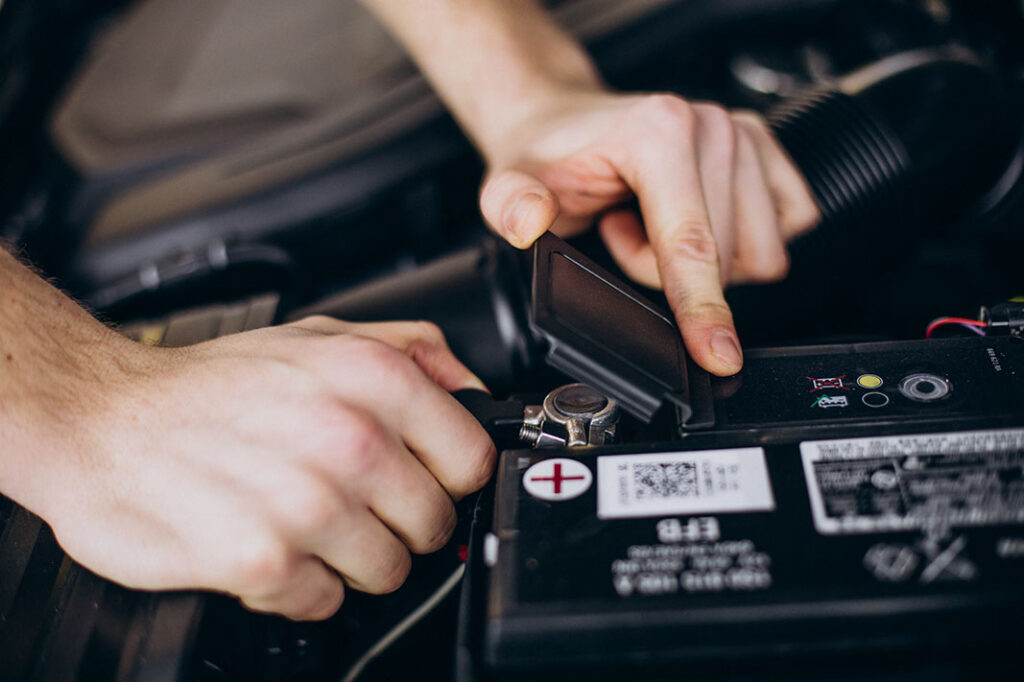
Start with the obvious…
- After a few minutes, turn off and restart the engine. The check engine light may occasionally be a glitch that is resolved with a restart.
- Make sure your gas gap is well-tightened. Even though the problem could be as simple as a loose gas cap, some models regrettably demand that the check engine light be reset.
- Make sure the fuel tank has enough fuel in diesel Mercedes vehicles because a defective sensor could cause the check engine light to come on.
- After a brief delay, disconnect the negative battery cable. You must reset the radio, windows, and seat position settings after reconnecting. Also, keep in mind that sometimes an OBD II vehicle’s warning light isn’t turned off by unplugging the battery cable (from 1996-up). If the light doesn’t reset after restarting, it might require a trip to the repair shop.
If none of the aforementioned steps solves your problem, reset using the OBD scanner.
To reset the light using an OBD scanner
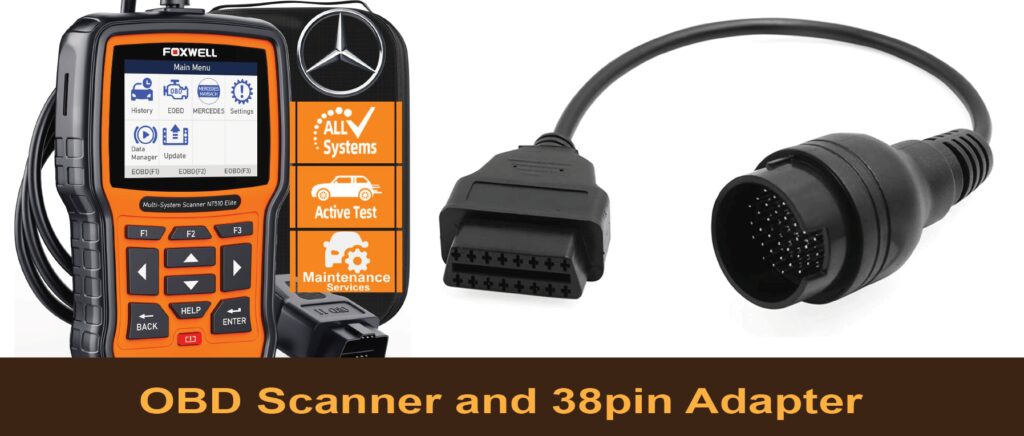
You need a Mercedes STAR 38-pin scanner for vehicles manufactured before 1995 and OBD II for vehicles produced after 1996. Both are available on Amazon.
- Locate the diagnostic port: The diagnostic port is typically located on the driver’s side of the vehicle under the dashboard.
- Plug in the OBD scanner: Connect the OBD scanner to the diagnostic port. Verify that the connection is secure.
- Turn the ignition key to the “on” position, but do not start the engine.
- Turn on the OBD scanner and perform a diagnostic scan of the vehicle’s computer system. This will retrieve any previously saved diagnostic codes as well as freeze frame data.
- Clear any stored diagnostic codes and freeze frame data from the vehicle’s computer system after the diagnostic scan is complete.
- Check the reset: Turn off the ignition and then back on to ensure the check engine light has been reset. The reset was successful if the light did not come back on.
- Keep an eye on the light: If the check engine light comes back on, it indicates that the problem has not been resolved and that additional diagnosis and repair may be required.
Wrapping up
Keep in mind that resetting the Mercedes check engine light does not address the underlying problem. It is merely a band-aid that might conceal the issue. To give you time to visit the dealership or repair shop for more help if the issue persists.
Related articles on Mercedes Engines
Plus more articles

